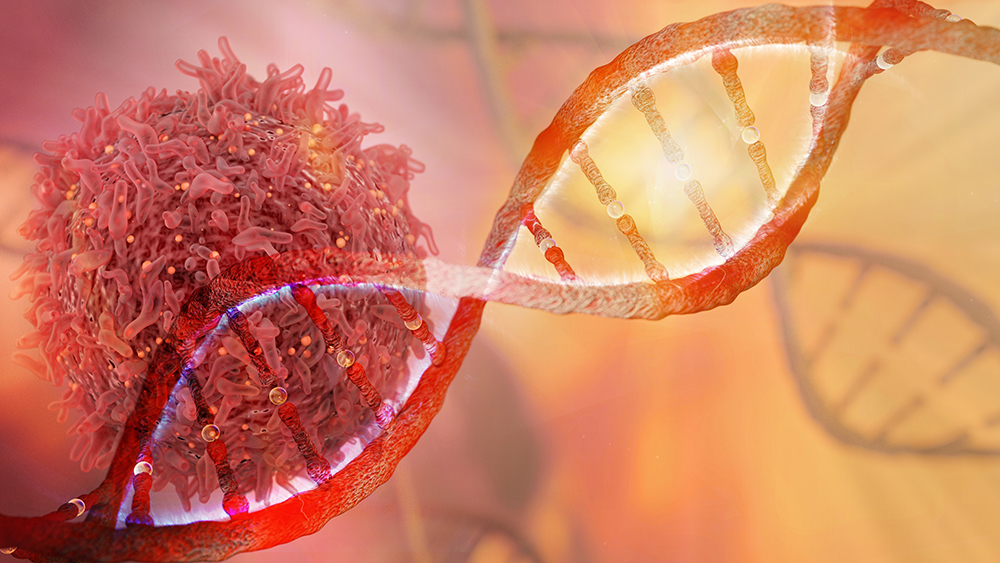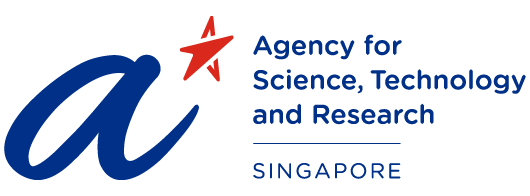A*STAR NEWS
PRESS RELEASES
Paving the way to more precise treatments for an aggressive type of lymphoma cancer
- Novel genetic variants affecting individual risk of Natural Killer T-Cell Lymphoma identified by international research team
- Findings highlight significant role of the immune system in cancer controls, and potential applications of genetic consultation in precision medicine and
immunotherapies
Singapore, 11 May 2020 – As part of the National Medical Research Council (NMRC) Translational and Clinical Research (TCR) flagship programme, a multidisciplinary team from the National Cancer Centre Singapore (NCCS), Singapore General Hospital (SGH), National University Cancer Institute Singapore (NCIS), A*STAR’s Genome Institute of Singapore (GIS), and an international lymphoma study group have identified novel genetic variants affecting individual risks of Natural Killer T-cell lymphoma (NKTCL), an Asian-centric and aggressive cancer that currently has limited treatment options. The findings pave the way for potentially more effective strategies to detect and treat this disease.

This is the largest scale genome-wide association study of NKTCL in the world, and the findings were published in the journal, The Lancet Oncology1 on December 23, 2019.
NKTCL develops outside the lymph node, which is commonly found in the nasal area but can also occur in other parts of the body such as the skin and gastrointestinal tract. Relapse is common for this disease and the survival rate is low. Currently, the global 5-year overall survival rate is about 70% in patients with early stage NKTCL and less than 50% in patients with late stage disease2.
Epstein-Barr virus (EBV) infection has been considered as a risk factor of NKTCL. The presence of EBV in a tumour is an observable clinical characteristic during diagnosis. A high level of EBV DNA indicates disease progression, poor response to therapy and poor survival. In 2016, the team had reported for the first time that the HLA-DPB1 gene, associated with EBV is a strong contributor to NKTCL.
The team then extended its work by recruiting 1,417 patients with NKTCL and 20,402 unaffected individuals from multiple regions in Asia and compared the genomes of patients with NKTCL and individuals without NKTCL. The study found two additional risk genes - IL18RAP and HLA-DRB1, independent of the risk conferred by the previous risk gene HLA- DPB1. It was found that individuals carrying the risk allele in the IL18RAP genes have a 39% increased risk of developing NKTCL, and those with the risk allele in the HLA-DRB1 genes have a 53% increased risk of developing NKTCL. Importantly, individuals who carry two copies of the risk alleles at IL18RAP, HLA-DRB1 and -DPB1 have an 18-times increased risk of getting NKTCL compared to individuals who do not carry any of the risk alleles, suggesting a potential application in patient stratification for clinical studies on precise treatments. (Please refer to Annex A for details on the IL18RAP and HLA-DRB1 genes).
Prof Lim Soon Thye, Deputy Medical Director (Clinical) and Senior Consultant, Division of Medical Oncology, NCCS commented, “Our findings shed light on the need for genetic consultation to aid precision medicine for patients with NKTCL and highlight the potential benefit of immunotherapies to tackle this deadly disease. As the disease is prevalent in Asian populations, international collaboration with centres across Asia has been particularly helpful in enabling the study of NKTCL.”
“Genetics is a useful tool for us to gain insights into how our body responds to diseases. Through this genetic study in multiple populations, we confirmed the important contribution of the way our body recognises abnormal cells to the risk of NKTCL. Further studies are ongoing in our efforts to pinpoint the precise biological mechanisms of the risk genes in the context of getting NKTCL,” said Dr Khor Chiea Chuen, Group Leader, GIS.
“This is a great product of international talents and efforts, involving more than 140 collaborators from more than 90 institutions. Our findings provide insights into the development of strategies for the precision medicine fighting against NKTCL. Our findings highlight the importance of immune surveillance in NKTCL development, and therefore future studies on dissecting the tumour microenvironment of NKTCL would be fascinating. In addition, since the major risk genes for EBV-related cancers are different, how EBV plays a role in tumorigenesis awaits further investigation,” said Prof Bei Jin-Xin, Sun Yat-sen University Cancer Center, and Center for Precision Medicine of Sun Yat-sen University, Guangzhou, China.
Funding
The research project is funded by NMRC through the National Lymphoma Translational Research Programme, led by Prof Lim Soon Thye, who holds the Tanoto Professorship in Medical Oncology. The project is also supported by grants from the Tanoto Foundation Professorship in Medical Oncology, New Century Foundation Limited, Ling Foundation.
About National Cancer Centre Singapore
National Cancer Centre Singapore (NCCS) provides a holistic and multi-disciplinary approach to cancer treatment and patient care. We see close to 65 per cent of the public sector oncology cases, and they are benefiting from the sub-specialisation of our clinical oncologists. NCCS is also accredited by the US-based Joint Commission International for its quality patient care and safety. To deliver among the best in cancer treatment and care, our clinicians work closely with our scientists who conduct robust cutting-edge clinical and translational research programmes which are internationally recognised. NCCS will also launch its Proton Beam Therapy programme at its new centre. NCCS strives to be a global leading cancer centre, and shares its expertise and knowledge by offering training to local and overseas medical professionals. www.nccs.com.sg
About A*STAR’s Genome Institute of Singapore (GIS)
The Genome Institute of Singapore (GIS) is an institute of the Agency for Science, Technology and Research (A*STAR). It has a global vision that seeks to use genomic sciences to achieve extraordinary improvements in human health and public prosperity. Established in 2000 as a centre for genomic discovery, the GIS will pursue the integration of technology, genetics and biology towards academic, economic and societal impact.
The key research areas at the GIS include Human Genetics, Infectious Diseases, Cancer Therapeutics and Stratified Oncology, Stem Cell and Regenerative Biology, Cancer Stem Cell Biology, Computational and Systems Biology, and Translational Research.
The genomics infrastructure at the GIS is utilised to train new scientific talent, to function as a bridge for academic and industrial research, and to explore scientific questions of high impact.
For more information about GIS, please visit www.a-star.edu.sg/gis.
About the Agency for Science, Technology and Research (A*STAR)
The Agency for Science, Technology and Research (A*STAR) is Singapore's lead public sector R&D agency, spearheading economic oriented research to advance scientific discovery and develop innovative technology. Through open innovation, we collaborate with our partners in both the public and private sectors to benefit society.
As a Science and Technology Organisation, A*STAR bridges the gap between academia and industry. Our research creates economic growth and jobs for Singapore, and enhances lives by contributing to societal benefits such as improving outcomes in healthcare, urban living, and sustainability.
We play a key role in nurturing and developing a diversity of talent and leaders in our Agency and research entities, the wider research community and industry. A*STAR’s R&D activities span biomedical sciences and physical sciences and engineering, with research entities primarily located in Biopolis and Fusionopolis. For ongoing news, visit www.a-star.edu.sg/.
Annex A
About the IL18RAP and HLA-DRB1 genes
IL18RAP gene encodes the accessory β subunit of the heteromeric receptor for interleukin 18 (IL18), which is a pro-inflammatory cytokine, and the IL18-IL18RAP signaling pathway plays an important role in modulating immunity as well as tumorigenesis. The study found that a genetic variant tagging by the risk allele at IL18RAP gene has a stronger regulatory effect on IL18RAP expression. It is hypothesised that individuals carrying the risk allele have a higher capability to transduce pro-inflammatory IL18-IL18RAP signals and thus higher risk of developing NKTCL.
The HLA-DRB1 gene is a family member of the human leukocyte antigen (HLA) complex, which helps the immune system distinguish the body's own proteins from proteins made by foreign invaders such as viruses and bacteria as well as tumour-derived neoantigen. The study found that the risk variants at HLA-DRB1 alter the binding affinity of the encoded protein to potential antigen. Therefore, it is speculated that individuals with the risk variants may have poorer antigen recognition, and thus weaker immune and inflammatory response against virus infection and tumour clearance.
Was This Article Helpful?
A*STAR celebrates International Women's Day

From groundbreaking discoveries to cutting-edge research, our researchers are empowering the next generation of female science, technology, engineering and mathematics (STEM) leaders.
Get inspired by our #WomeninSTEM
